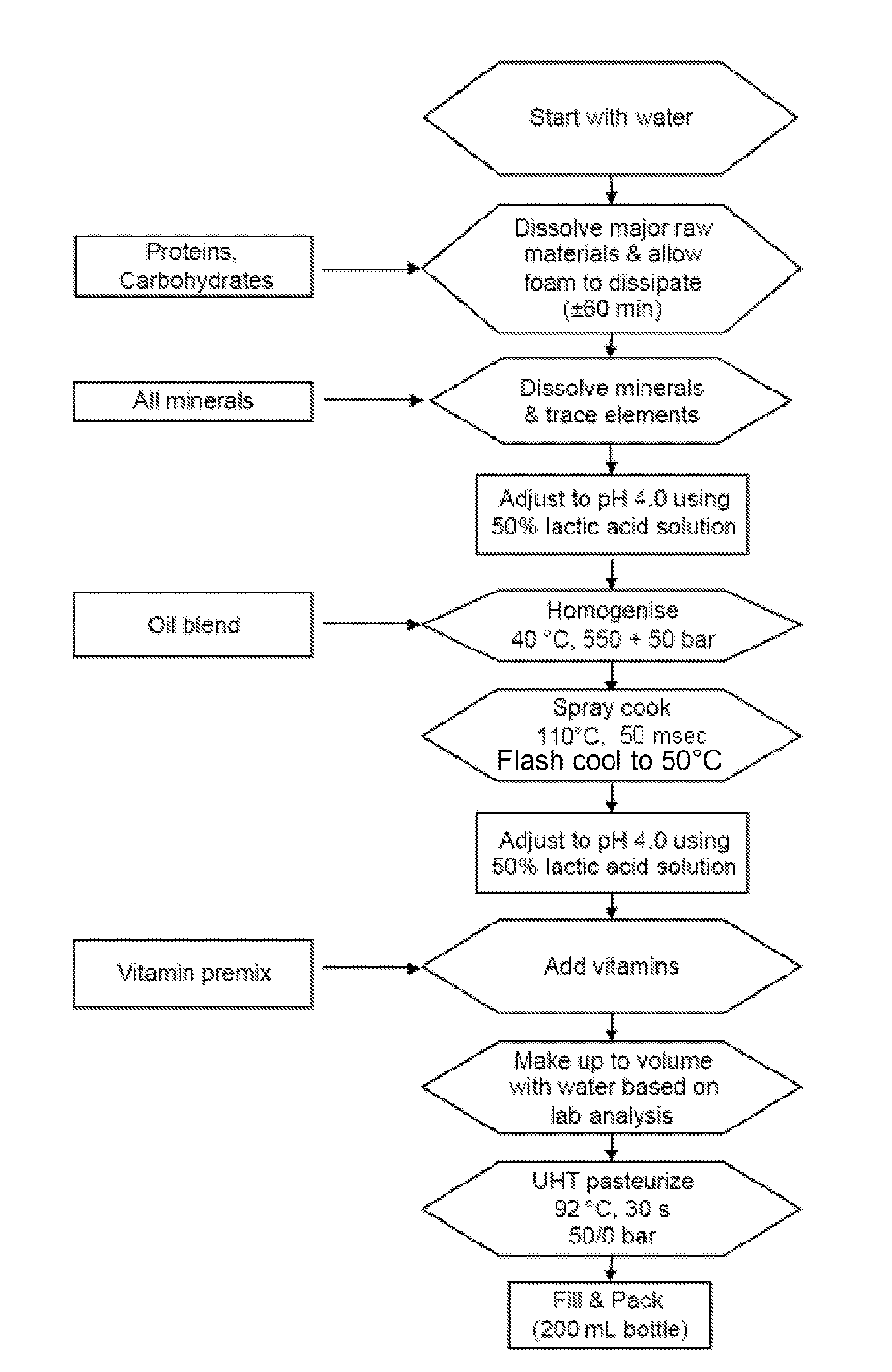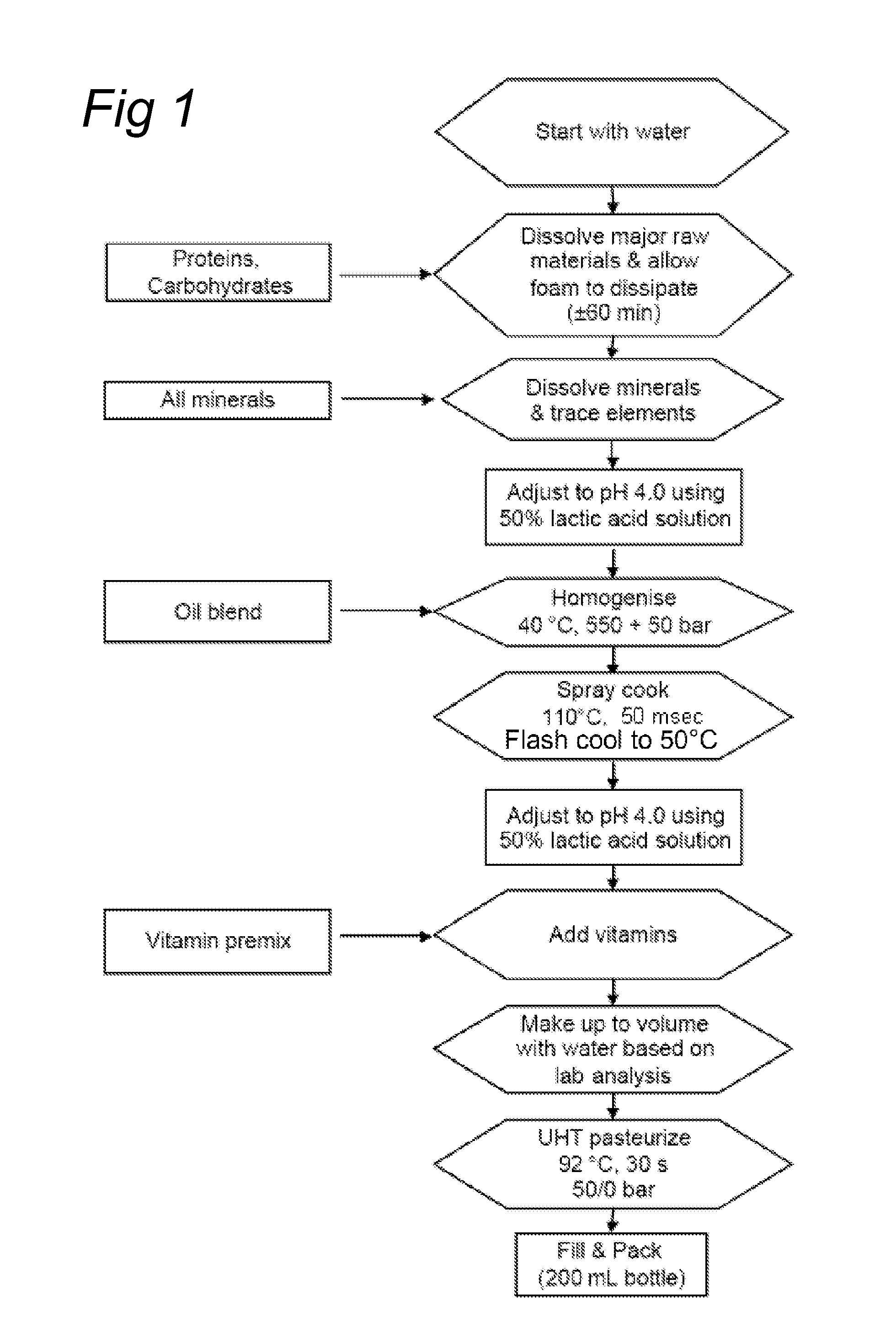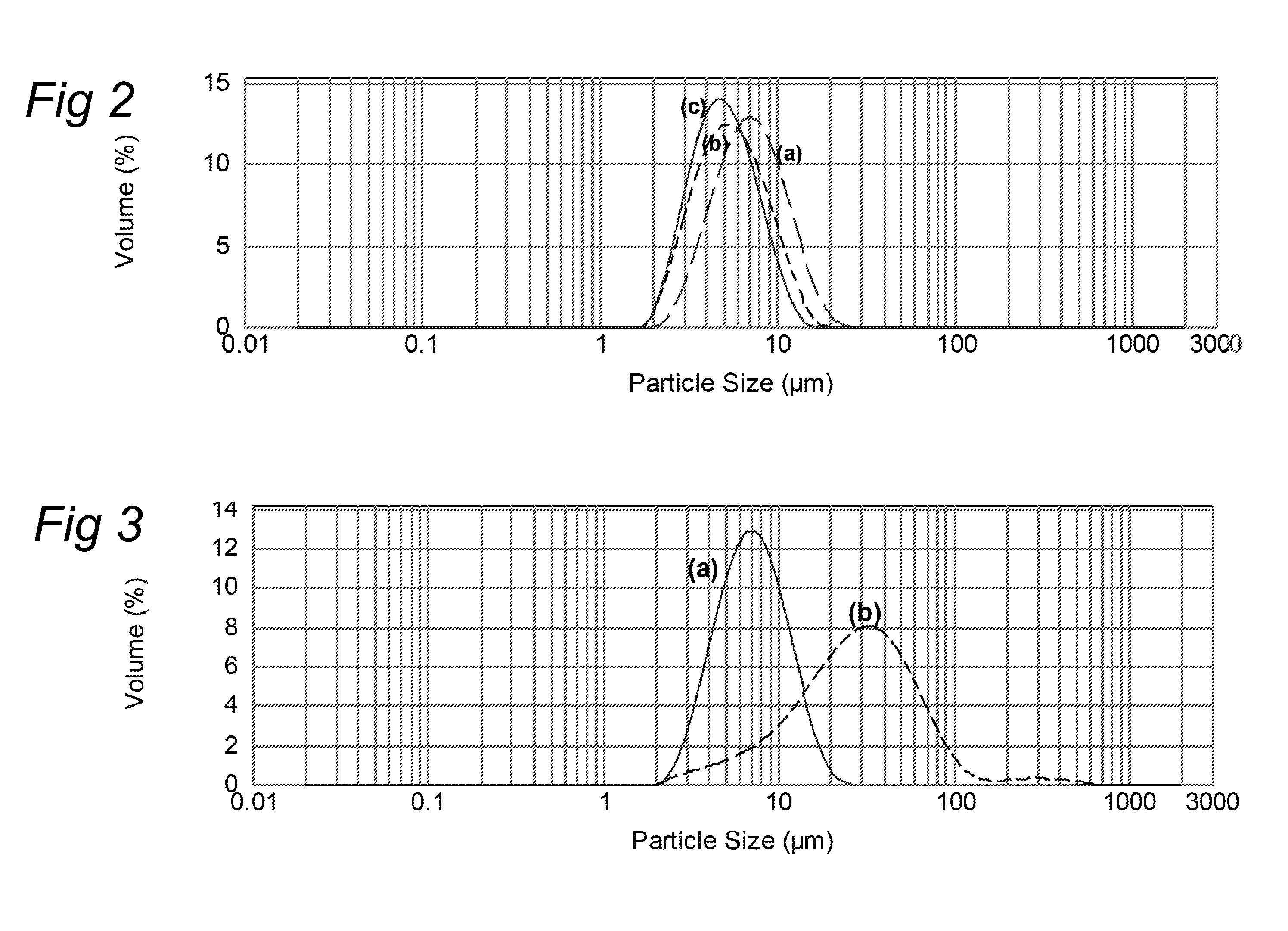High protein liquid enteral nutritional composition
a technology of enteral nutrition and high protein, applied in the field of high protein liquid enteral nutritional composition, can solve the problems of reducing the ability of consumers to consume products, difficulty in consuming products, and insufficient compliance,
- Summary
- Abstract
- Description
- Claims
- Application Information
AI Technical Summary
Problems solved by technology
Method used
Image
Examples
example 1
Acidic Whey Protein Composition (12 g / 100 ml) (Composition A1)
[0131]A flow chart of the process is shown in FIG. 1. The protein (WPC powder of Lactalis, Prolacta 80), carbohydrates and minerals were dispersed in water and the solution was set to pH 4.0 using 50% lactic acid. The oil was blended into the product and the pre-emulsion was homogenised at 40° C. in a 2-stage homogenizer at a pressure of 550 / 50 bar. The product was then atomised into the spray-cooking chamber and instantly heated to 110° C. by mixing with steam and held at this temperature for approximately 50 msec. Subsequently, the product was flash-cooled to 50° C. and pumped into a holding tank. The final pH of the product was adjusted to pH 4.0 and the product was then UHT pasteurized at 92° C. for 30 sec and filled into 200 ml bottles. The product was liquid, with a viscosity of 150 mPa·s at 20° C. at a shear rate of 100 s−1. The product had a smooth mouth feel. This is confirmed by the particle size distribution (F...
example 2
Acidic Whey Protein Composition (12 g / 100 ml) (Composition A2)
[0132]A recipe with composition A2 was made according to the process of Example 1. WPI powder from Fonterra (LGI 895) was used as the protein source. The final product was liquid, with a very low viscosity of 15 mPa·s at a shear rate of 100 s−1. The product had a smooth mouth feel. The average particle diameter as obtained from static light scattering (Malvern Mastersizer 2000), d[4,3], after UHT pasteurization was 5.7 μm. Composition A5 was made in a similar way as composition A2.
example 3
Acidic Whey Protein Composition (16 g / 100 ml) (Composition A3)
[0133]A flow chart of the process is shown in FIG. 4. The protein (WPI) (Bipro®, Davisco), carbohydrates and minerals were dispersed in water and the solution was set to pH 4.1 using citric acid. The oil was blended into the product and the pre-emulsion was homogenised at 40° C. in a 2-stage homogenizer at a pressure of 550 / 50 bar. The product was then atomised into the spray-cooking chamber and instantly heated to 120° C. by mixing with steam and held at this temperature for approximately 50 msec. Subsequently, the product was flash-cooled to 50° C. and pumped into a holding tank. The final pH of the product was adjusted to pH 4.1 and the product was split in two batches. One batch was then UHT pasteurized at 92° C. for 30 sec and filled aseptically into aseptic 200 ml bottles. The product was liquid, with a viscosity of 75 mPa·s at a shear rate of 100 s−1. The other batch was retorted (15 minutes at 92° C.). This produc...
PUM
| Property | Measurement | Unit |
|---|---|---|
| energy density | aaaaa | aaaaa |
| viscosity | aaaaa | aaaaa |
| energy density | aaaaa | aaaaa |
Abstract
Description
Claims
Application Information
 Login to View More
Login to View More - R&D
- Intellectual Property
- Life Sciences
- Materials
- Tech Scout
- Unparalleled Data Quality
- Higher Quality Content
- 60% Fewer Hallucinations
Browse by: Latest US Patents, China's latest patents, Technical Efficacy Thesaurus, Application Domain, Technology Topic, Popular Technical Reports.
© 2025 PatSnap. All rights reserved.Legal|Privacy policy|Modern Slavery Act Transparency Statement|Sitemap|About US| Contact US: help@patsnap.com



